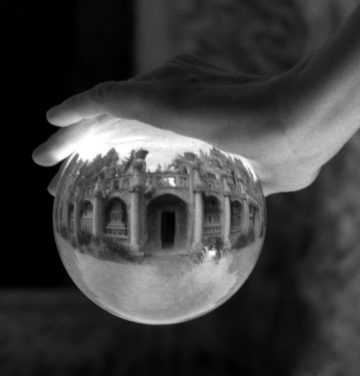Gabriela MORAWETZ
Born in Poland, Gabriela Morawetz graduated from the Academy of Fine Arts in Krakow (Poland) in 1975, and also studied at the printmaking centre in Geneva (Switzerland). A self-taught photographer, she won first prize at the fifth International Photography Salon in Wroclaw (Poland). Her works, made of canvas, glass and metal, take the viewer into a suspended imaginary world imbued with mysterious symbols. Often, the strange presence of female bodies intrudes into a quasi-occulent environment.
Her work has been shown in numerous exhibitions around the world, particularly in galleries. In 2006, the Museum of Contemporary Art in Caracas (Venezuela) devoted a major retrospective to her work. In 2018, she will be taking part in the Biwako Biennial in Omihachiman (Japan). She is represented by the galleries Theresa Hérold in Paris, See+ Gallery in Beijing (China), Maya Polsky Gallery in Chicago (United States) and Regina Anzenberger Gallery in Vienna (Austria).
Visite du Palais Idéal 2007
The photograph Visite du Palais idéal, in the collection, is a print made for the Postman Cheval exhibition at the Musée de la Poste in 2007. The artist donated the work to the Palais idéal du facteur Cheval. It shows the west facade of the naive architecture set in a ball of glass. As if weightless at the touch of a delicate hand, the whole thing takes on the appearance of a vanity, symbolising the fragility of life but also, perhaps, the fragility of the building. Looking like a drop of water, this transparent sphere could be a reference to the omnipresent nature of the building. During Cheval’s lifetime, water was an essential element in his architecture: he dreamt of the Palais being animated by waterfalls and fountains. In the spirit of the World’s Fair, Postman Cheval represented a variety of architectural styles, including a Swiss chalet and the White House of Algiers. The postman was also cosmopolitan, as can be seen from his interest in Arab culture. A mosque with its crescent and minarets can be seen in the corner of the façade. In this way, the representation of the invisible, and the interpretation of its mysteries, is a link that unites the architect with the artist of this unreal photograph.

